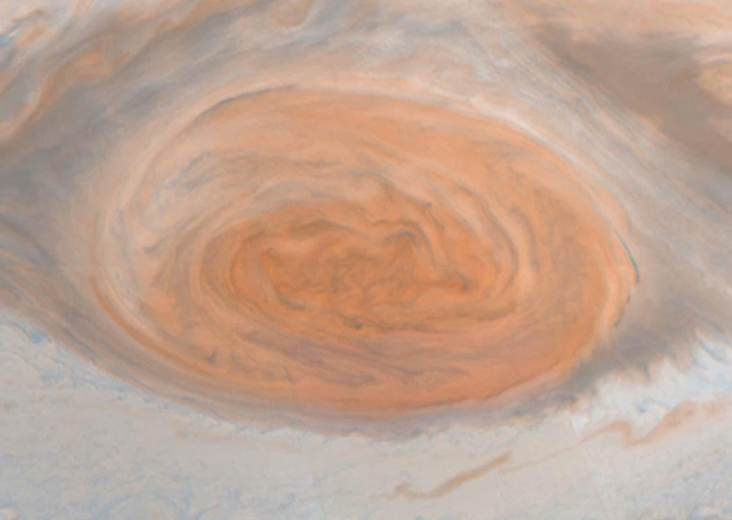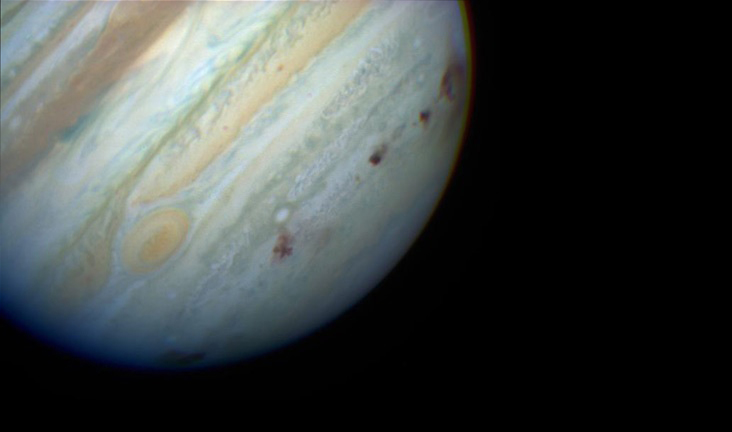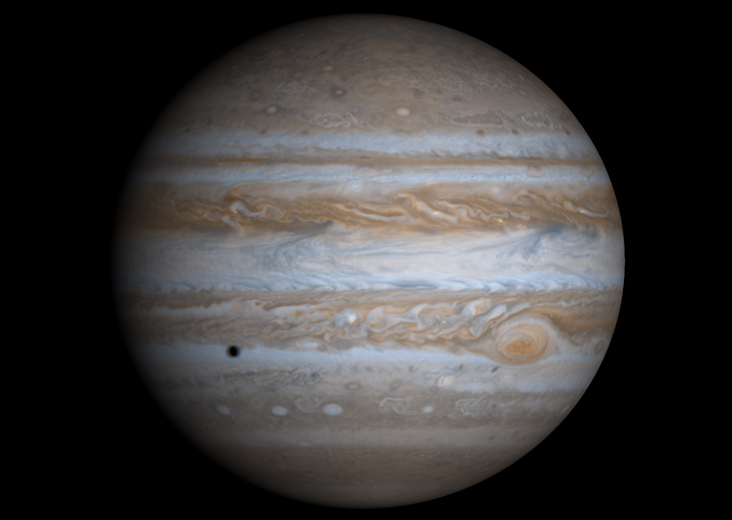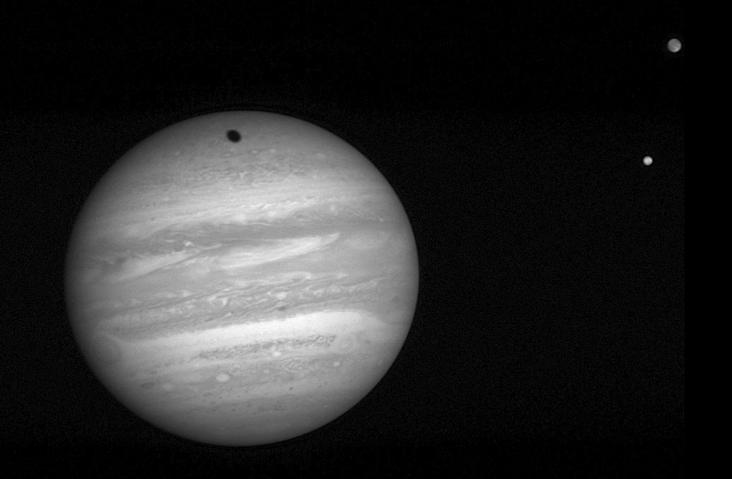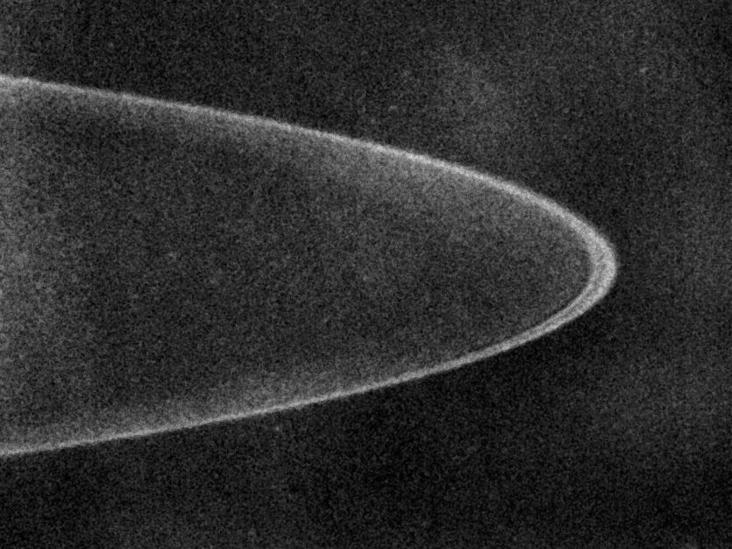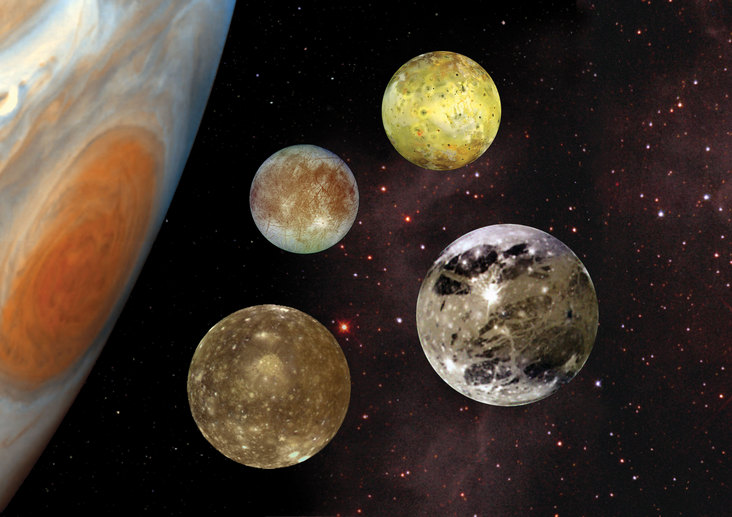This gas giant is the 5th planet from the Sun. It could fit over 1,300 Earths in its volume and has a mass 2.5 times that of all the planets combined!
Jupiter is made up of completely Hydrogen (89.8%) and Helium (10.2%) with traces of methane and ammonia. It is widely thought, that Jupiter nearly became a star like the Sun. Had there been more Hydrogen to kick-start the fusion reactions, our Solar System would have two Suns. But instead it has just become a bloated planet.
With such a great mass of gas, Jupiter is slowly contracting, about 2cm a year. Pressure inside Jupiter is thought to be so intense that the hydrogen turns into a liquid that acts like a metal. The core is thought to be solid.
Jupiter takes just under 10 hours to spin on its axis. This is 2.4 times faster than the Earth but, Jupiter is over 1000 times bigger, so this is incredibly fast! As a result the planet is flattened. It is 7% smaller from pole to pole than it is across the equator.
Jupiter has a huge magnetic field that is 200,000 times stronger than Earth's. It is believed to have been created by the rapidly spinning metallic hydrogen. The field has a tail that extends 650 million km past the orbit of Saturn!
A decade ago, Jupiter was only known to have had 16 moons. Now, 64 moons have been discovered and named! It has the most moons in the Solar System. The moons are grouped into two categories: regular and irregular satellites. Regular satellites contain 8 moons: 4 Inner satellites that orbit very close to Jupiter (Metis, Adrastea, Amalthea, and Thebe), and the 4 Galilean moons: Ganymede, Callisto, Io, and Europa. The irregular moons are sub-categorised further depending on where they orbit.
Jupiter is the 4th brightest object in the night sky and can be seen with a naked eye. The main bands of clouds can be seen with a 15-cm telescope. It is visible most of the year apart from times of opposition- when it is on the other side of the Sun.

